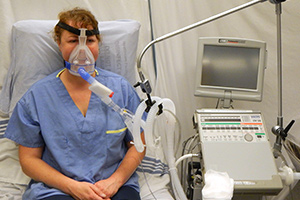Human Breath Analysis

For further information and pricing, please get in touch with us.
For real-time studies of low concentration compounds in Human Breath for research applications
The research of low level compounds in human breath is prominent in the fields of medicine, sports science and human physiology. Compounds identified are indicators of disease, physiological changes and stressors to the body.
Related Products
With excellent sensitivity and 7 decade dynamic range, the Hiden HPR-20 Transient MS is an ideal tool for the dynamic characterisation of low concentration compounds in human breath.
The technique offers the following advantages:
- Non-invasive – removes need for collecting and storing samples
- PPB level detection limits
- Ability to track a number of compound concentrations breath-by-breath to track changes in real time
- <150 msec response time to changes in gas concentrations
- 7 decade continuous dynamic range with > 5 decades response in < 0.2 seconds
- Scan speeds of up to 500 measurements per second
The Breath Analysis of Expired VOCs during Exercise markers in human breath for the determination of physiological events such as lactate threshold and oxidative stress remains a challenge for conventional ‘off-line’ gas analysis equipment, such as GCMS. The analysis of these types of samples often requires a rapid response, coupled with a wide dynamic range. The monitoring of breath VOCs has the potential to be an effective non-invasive tool for the real-time investigation of various physiological events.
The HPR-20 TMS was connected to a proprietary breathing mask through a customized adaptor that was optimized for high-speed analysis. Test subjects of varying ages and fitness levels performed a maximal exercise test on a stationary bicycle as their breath was monitored in real-time. The exercise test involved of a common physiological test known as a ‘ramp test’, which aims to ensure that the subject is exercising at their aerobic capacity.
Data obtained using the Hiden HPR-20 TMS allowed the real-time tracking of multiple compounds that are produced in varying amounts during both aerobic and anaerobic respiration. The time resolution of 20 ms per data point allowed for the monitoring of the concentration of compounds present in each breath. Inflections were also visualized as data at points that could be related to physiological changes in the subject, such as the individual’s lactate threshold. Monitoring any changes in VOC compounds during physiological events is novel technique that has not been previously established.
ITM | Membrane Studies
Gas transport in polymeric membranes.
Gas transport in polymeric materials.
mimit.org | The University of Manchester | NHS

